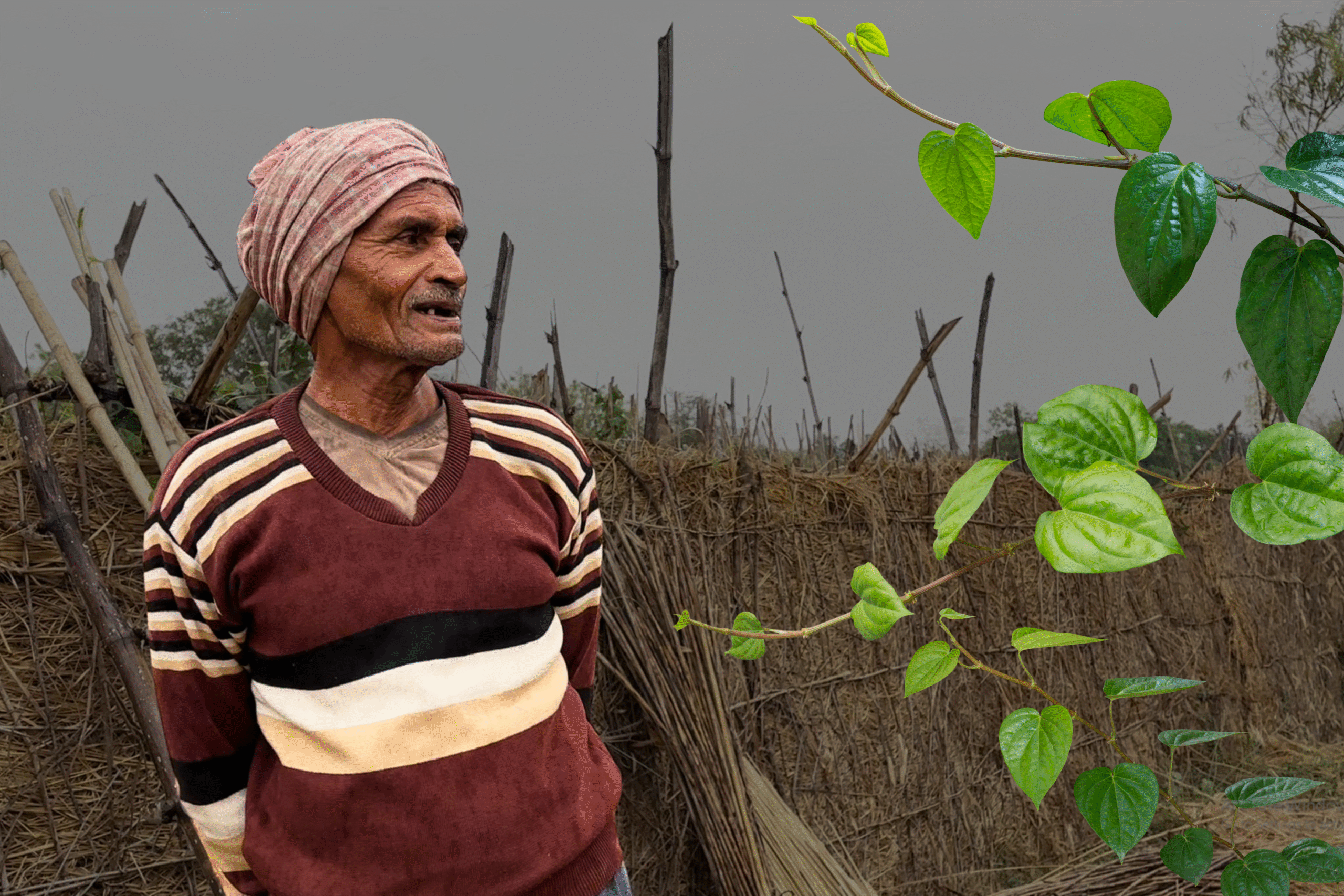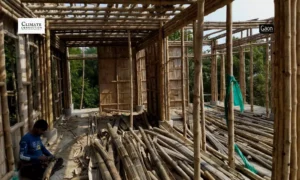Rewa, Madhya Pradesh
Rakesh Kunder deftly carves a betel nut, and it transforms into a miniature wooden idol. The 47-year-old craftsman is the third generation of his family, from Rewa, Madhya Pradesh, who does the work of creating these pieces of art from the tiny betel nut, also known as areca nut or supari.
“It was in 1932 when my grandfather, Ramsiya Kunder, used to serve paan and supari to the courtiers at the durbar of Maharaja Gulab Singh of the princely state of Rewa,” Rakesh told Gaon Connection.
“My grandfather came up with the idea of making little sindoor dabbas (boxes to hold vermillion) which he also distributed at the court. The royalty loved it and my grandfather was rewarded with fifty rupees, as a token of appreciation,” Rakesh said.
Ever since the family has been engaged in creating pieces of wooden art from the betel nuts, Rakesh, who has himself been doing it for the past 32 years, said.
Rakesh Kunder always has the idols of Lakshmi and Ganesha ready and available with him. “But the other things like the Taj Mahal, little lamps, animal figurines, etc., I make them on order,” he said.
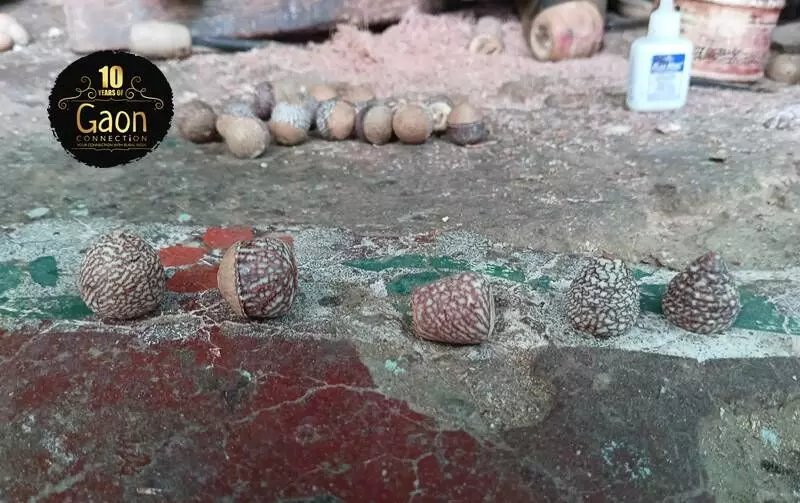
The craft is at the moment just enough to keep hunger at bay.
Also Read: Madhya Pradesh: Innovation and govt’s assurance provide glimmers of hope to Budhni’s toy artisans
The making of the supari toys
The craftsman said that he first selects the biggest betel nuts he could find in the market. Then, with the help of an electric tool, he carves the betel nut into the different parts of the toy he has in mind to make, and finally glues those parts together. And an eco-friendly supari toy is ready!
The price of each toy, idol or figurine depends on its size. They can cost anything upwards of Rs 600 (for a seven-inch artefact) They normally craft pieces that go up till about 13 inches. Anything larger is rare and they only do it on order.
According to the Kunder family, the craft is time consuming. It involves sitting on the floor for hours, focusing on a small nut, handling the electric tools with precision, and straining one’s eyes to get the details on the miniature figure absolutely right.
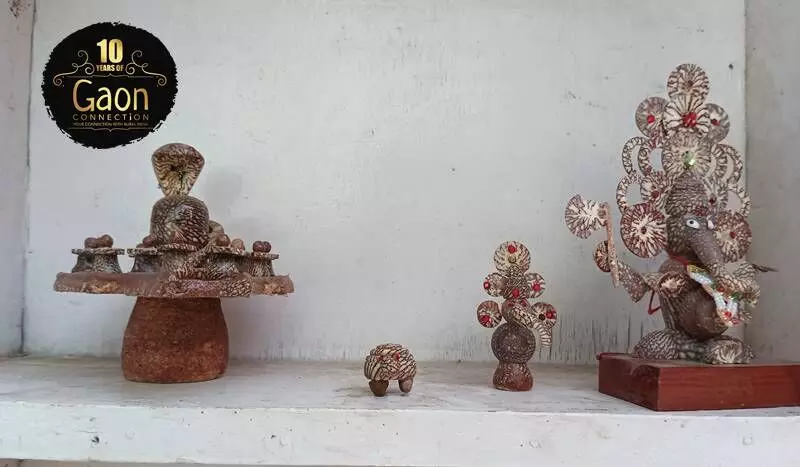
“Our figurines are given as mementoes at all government and private exhibitions held in Rewa and the organisers always order them beforehand,” Rakesh said with considerable pride.
The Kunder family has received a lot of recognition from their craft, but the pandemic caused considerable struggle for them.
“Our earnings almost came to a halt during the lockdown, and only now are things limping back to normal. This Diwali we sold nearly 120 pieces of our craft as events start opening up again, we are hoping to step up our work and earnings,” Rakesh said.
Craftsman seek government support
Rakesh’s uncle, Durgesh Kunder also practises this craft. “I started carving at the age of 15. This work is time consuming,” 50-year-old Durgesh, told Gaon Connection. “While it is difficult to say how much exactly we earn per month as that depends on the size of the order, we have about a 50 per cent profit margin,” he explained.
But the future of the craft looks bleak, said Durgesh. He feared that none of the younger generation was ready to take it up.
“We had made an offer to the government that we would teach the craft to people who were physically challenged and Chief Minister Shivraj Singh had also recommended that the craft be promoted, but all that has remained out of sight in some files, unseen,” he said.
“A single family has been the custodian of this supari art since 1932. But there has been no help forthcoming to help us evolve the craft. Had we been given access to institutions such as NITs, etc., we could have developed the art more,” Durgesh said.
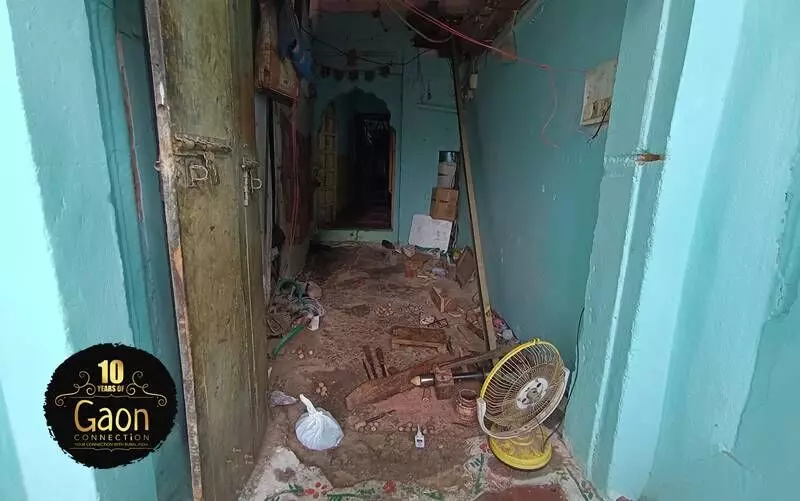
Also Read: Javed Sayyed’s handcrafted, GI-tagged Channapatna toys
“If the craft remains the way it is today, I will definitely not encourage the younger generation to take it up. I don’t want my children ruining their eyesight working on something that is not considered worthy of government help or encouragement,” Durgesh said.
According to him, the craft is at the moment just enough to keep hunger at bay. And, he would want his children to do a white collar job rather than waste their time on this profession.
“All we do is sit waiting for customers to show up,” he said despondently.
Also Read: Mirzapur toys narrate a story of neglect
Supari craftsman need recognition
According to the official website of the Development Commissioner (handicrafts) there are 6.89 million craftspersons in the country. In 2020-21 India exported handicrafts worth USD 3,459.74, though this was the lowest since the pandemic.
But, the supari craftsmen from Rewa do not form part of this data. One of the reasons is that they are not part of the Pehchan’ cards scheme, an initiative by the Union Textile Ministry to register and provide identity cards to handicraft artisans and link them to a national database.
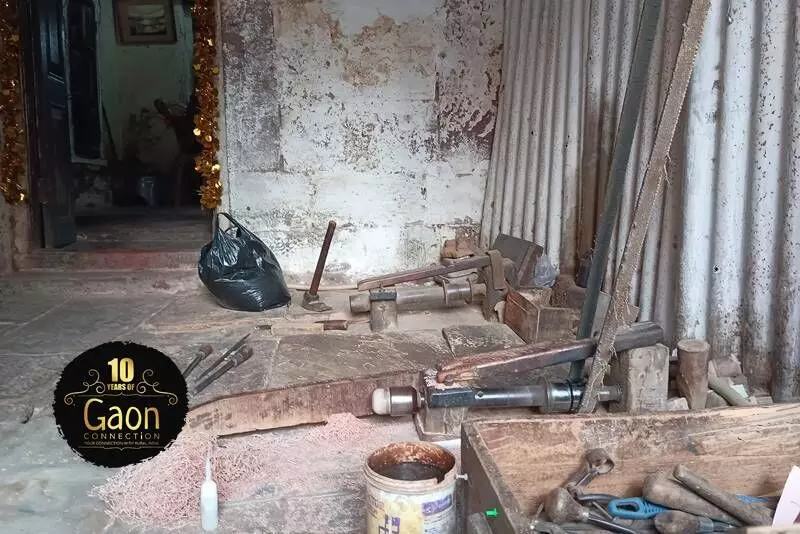
“We are not aware of any such scheme,” Rakesh said. They are also not part of the National Handicrafts Development Programme launched by the central government in 2021. This programme is aimed at providing skill development, marketing support and technical knowhow to craftspeople.
Also Read: Rugs to Riches: The dhurrie makers of Sitapur
The government’s Ambedkar Hastshilp Vikas Yojana, begun in 2001-02 is also part of this. But the supari craftspeople are not part of this either as they have not formed any formal group of community.
According to UB Tiwari, general manager, department of commerce and industry, Rewa, efforts have been made to help these craftspeople. “We wanted to include this craft in the ‘one district one product’ category, but the kind of volume of craft needed to be included in that category was not there in this particular craft,” Tiwari told Gaon Connection.
The official said that an attempt was also made to include them in the Comprehensive Handicrafts Cluster Development Scheme. “But the five families that were involved in this craft, were not united, and hence we could not proceed,” he added.
In response Durgesh said that he worked all day to make four to five pieces of craft. “In order to avail of government schemes, we are asked to meet so many officials. We simply do not have the time to run from pillar to post for this,” he said.







